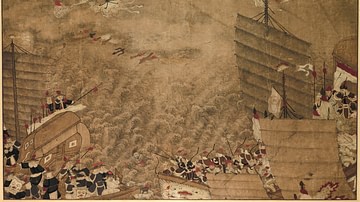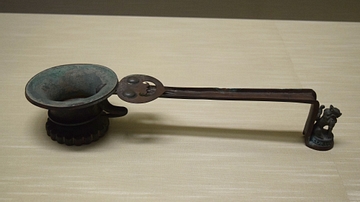Search
Search Results

Image
Stone Architecture at Tatev Monastery
Tatev Monastery was one of medieval Armenia's most important religious and cultural centers during the Middle Ages. It's renown for its stone architecture and location on a large basalt plateau near the Tatev village in Syunik Province in...

Image
Ajanta Architecture
The caves of Ajanta were built between 2nd century BCE and 6th century CE. Here beautifully decorated inner pillars and trifolium from Cave 26 can be seen.

Image
Korean Hanok Architecture
A modern building employing the classic features of the hanok architectural style of ancient Korea. (House of Kim Jeong-hui)

Image
Typical Molding Details in Gandharan Architecture
Base molding typically seen on most stupa bases in the Taxila region

Definition
Meiji Restoration
The Meiji Restoration was a political event that took place in Japan in 1868. In it, the Tokugawa family, a warrior clan that had ruled Japan for more than 260 years, was overthrown by a group of political activists who proclaimed that their...

Definition
Wako - The Medieval Pirates of Southeast Asia
Wako (aka wokou and waegu) is a term used to refer to Japanese (but also including Chinese, Korean, and Portuguese) pirates who plagued the seas of East Asia from Korea to Indonesia, especially between the 13th and 17th centuries CE. Besides...

Definition
Seven Lucky Gods
In Japanese folklore the Shichifukujin are the Seven Lucky Gods who may also be known as the Seven Gods of Happiness or the Seven Gods of Good Fortune. The seven gods are in fact of diverse origin as some are originally from Buddhism, some...

Image
Japanese Troops Enter French Indochina, 1940
Japanese troops enter French Indochina and head towards Lang Son in what is northern Vietnam today. During 1940, Japan began to encroach on French Indochina so that they could cut off the supplies that were routed through the area and into...

Image
Ancient Japanese Incense Burner
This ancient Japanese incense burner has a lion-shaped weight at the end of its handle. It was cast in bronze and dates from the 8th century CE during the Nara period in Japanese history. (Tokyo National Museum)

Image
Portion of a Japanese Buddhist Sutra
This is a portion of the "Bussetsu zoho ketsugi kyo," which was a sutra copied by hand in ink on paper in 12th-century CE Japan. (Tokyo National Museum)